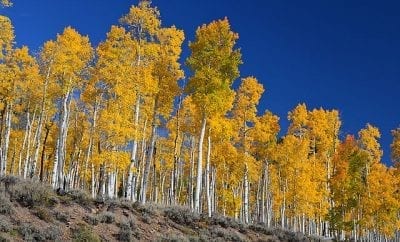
News
The Devastating Consequences of Deforestation
With scientists warning that we must stay under two degrees Celsius of warming to prevent grave effects of climate change, we are looking to innovative ways to implement new strategies to prevent this. One underrepresented idea is the fact that the planet’s forests can be utilized as a powerful climate mitigation tool, helping clear harmful carbon dioxide in the atmosphere. Unfortunately, deforestation is quickly diminishing our planets once proud forests.
Forests cover about 30 % of the world’s land area, but every year, swaths of forests the size of England are lost. Rainforests are also falling victim to deforestation, and could even vanish from the face of the Earth in the next 100 years if rates continue as they are.
A big driver of deforestation in agriculture, with farmers cutting down forests for planting crops or to make room for grazing livestock. Logging operations are another drain on forest populations, which feed the world’s demand for wood and paper products. These operations often function in opposition to the law, with little to no consequence to the parties involved.

Photo by kazuend on Unsplash
Deforestation is devastating for the environment as a whole. Not only does it result in a dramatic decrease in natural habitat for millions of species, but it is also a powerful driver for climate change. Trees help sustain the water cycle by returning water vapor to the atmosphere. They help regulate temperature in areas sensitive to any increases. Most importantly, they help regulate the amount of carbon dioxide in the atmosphere.
According to the Global Forest Watch, first loss currently accounts for 8 % of the worlds annual carbon dioxide emissions. If deforestation was regarded as a country, it would be ranked as the third-biggest carbon dioxide emitter on a global scale. With this, we are only accelerating the point to where we will reach a point of no return for climate change. Neglecting to address this problem also destroys one of our most powerful tools in helping reduce harmful greenhouse gases.
Nevertheless, there are some countries that are leading the charge in monitoring and fighting back against deforestation. Brazil is setting a good example by incorporating a combination of public policy initiatives, law enforcement, operational forest monitoring, and private sector participation to conserve the world’s greatest rainforests.
In the United States, many areas of forests are seeing a positive trend in regrowth. Nebraska and Oklahoma have seen a 25 % regrowth in some areas, with Texas, Kansas, and South Dakota gaining 10-20 % of forest land area. Forest replanting has also become a popular thing in America. Conservation organizations like The Nature Conservancy are leading the charge with several projects like its Plant a Billion Trees to restore our nation’s great forests. Our disappearing forests are a serious concern for the well-being of our future, but there’s still hope.





0 comments